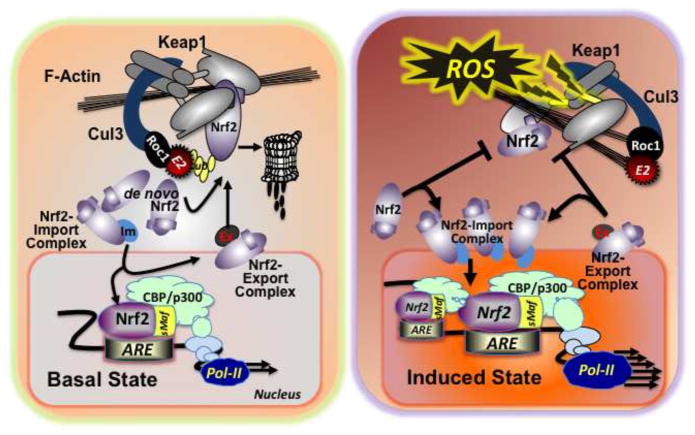Figure 2.
Keap1-Nrf2-ARE signaling. In the basal state (left), the Keap1-Cul3 system captures de novo synthesized Nrf2 and marks it by polyubiquitination for rapid proteasomal degradation. In the nucleus, exportin forms a complex with Nrf2, and transports Nrf2 to the cytoplasm. In this way, basal levels of target gene expression can be controlled. In the induced state (right), the Keap1-Cul3 degrasome complex is disabled, due to conformational changes in Keap1 evoked by oxidative or electrophilic stressors. This alteration allows de novo synthesized Nrf2 to translocate to the nucleus readily, resulting in accumulation and heterodimerization at AREs and increased or suppressed expression of target genes.

